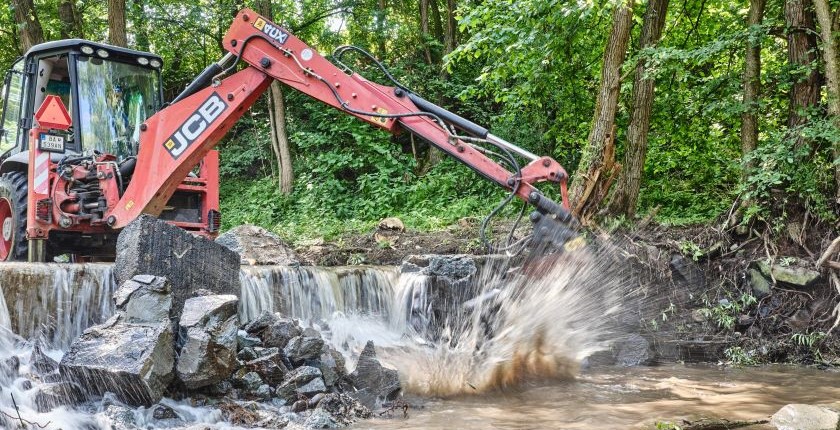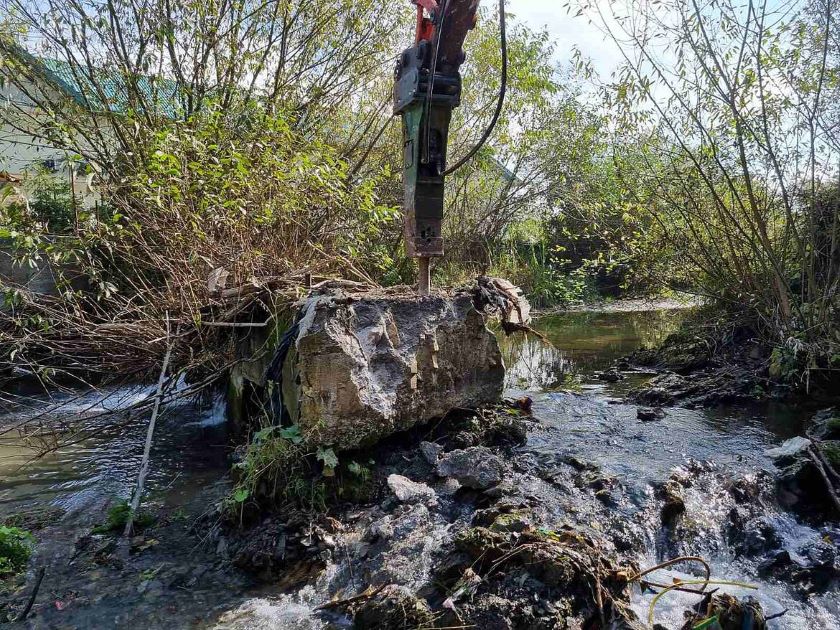
Photo: © Rob KleinJans Photography
Rivers in Europe are partitioned by over a million dams and barriers, many of which are out of date or out of service. More than 200 dams were removed in 2021, a report shows. Environmental organizations insist that European rivers must be freed of dams, and Montenegro is the first in the region to do so.
A record number of 239 dams were removed in 17 European countries in 2021, according to the annual report of the Dam Removal Europe (DRE). Spain led the way, removing 108 barriers last year.
The DRE coalition said 76% of the river barriers were small dams and weirs, while 24% were dams over two meters high.
The largest dam removed last year was 13 meters high and was located in Spain. The country continues to remove river barriers faster than others, demonstrating the importance of implementing legislation that requires the decommissioning of obsolete dams, according to environmentalists.
Portugal, Montenegro, and Slovakia each removed a dam from their watercourses for the first time last year, DRE said.
Montenegro the first in the region to remove a dam
The first dam in the Western Balkans was removed in October 2021 in Montenegro, with the aim of improving the ecological status of the Vezišnica River.
This was a particularly interesting case as three illegal and non-functional dams were removed in just nine months, said DRE.
The project was implemented by WWF Adria, the Municipality of Pljevlja, and the Ministry of Environment of Montenegro, with the support of the Lipljen-Pljevlja Sports and Fishing Club. The Vezišnica River has been completely restored to its natural and free flow.

There is also a dispute in Montenegro over the construction of a hydroelectric power plant on the Komarnica River. Environmental associations emphasize the importance of preserving the environment, biodiversity, and Nevidio Canyon.
Ecologists have filed a complaint with the Secretariat of the Berne Convention regarding the concession for the construction of the Komarnica hydropower plant.
Biodiversity has prevailed in Finland
In Finland, an operating hydroelectric power plant has been closed down. The dam was dismantled due to the prevailing environmental benefits over energy production.
Removing the dam will allow the salmon to reach the spawning grounds. It is the first of three hydroelectric power plants on the Hiitolanjoki River slated to be removed by 2024.
Considerable funding, as well as cooperation between various actors, were needed for the Hiitolanjoki project. The removal of the dam brought together the authorities, foundations, associations, companies, and individuals.
The project aims to remove obstacles on the river to enable upstream migration and preserve the largest landlocked salmon population. It could also help the development of fishing tourism and recreational activities in this area.
Finland is among the few European countries to be dismantling dams on operating hydroelectric power plants
Finland is one of the most efficient countries in removing river barriers. Also, the Nordic country is among the few European states that are dismantling dams on operating hydroelectric power plants, DRE said.
One free flow river in every country would be a breakthrough
Environmental activists note that restoring at least 25,000 kilometers of rivers to a free-flowing state is marked as one of the key elements of the European Union Biodiversity Strategy for 2030, which is part of the European Green Deal.
Restoring at least 25,000 kilometers of rivers to a free-flowing state is part of the European Green Deal
A huge number of 1.2 million dams and barriers have fragmented Europe’s rivers. Many of them are abandoned and outdated. The rivers are partitioned by weirs, dams, and various barriers, in many cases for more than a century.
These scales of fragmentation of rivers and watercourses are accompanied by a drastic decrease in the population of freshwater migratory fish in Europe, by 93% in the last 50 years. Therefore, it is urgent to open the free flow of rivers, DRE said.
Urgent opening of the free flow of rivers is necessary to preserve the migratory fish population
“Financial aids are being created to help cover the removal costs, like the new Open Rivers Programme, which will invest EUR 42.5m over the next six years to help remove river barriers in Europe,” said Pao Fernandez Garrido, project manager at the World Fish Migration Foundation, the Guardian reports.
At least one free and healthy river per country would be considered a breakthrough, Garrido stressed.
Removing obsolete dams is cost-effective
The cost of repairing and restoring barriers is considerably higher than the cost of demolition. Removing them is an effective way to restore rivers.
Removing dams and barriers is an effective way to restore rivers
The DRE coalition intends to establish this as a common practice across Europe over the next few years, starting with old and obsolete barriers that are out of service or no longer have an economic function.
Environmentalists note that there are at least 150,000 old, obsolete and “meaningless barriers” that fragment the flows of European rivers.
“The topic is still considered highly controversial in many countries,” says DRE, a coalition of seven environmental organizations that advocate the return of free rivers in Europe.


















Be the first one to comment on this article.